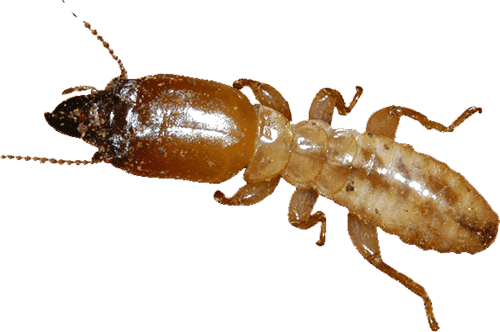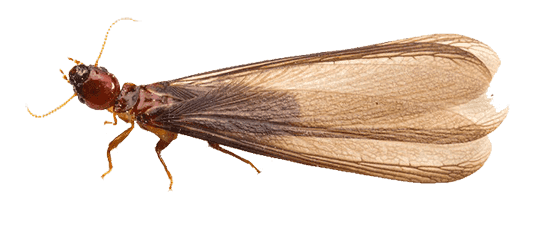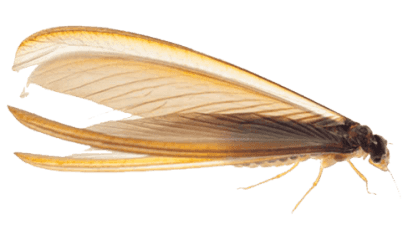
Kilter Termite and Pest Control will defend your home against future termite infestations or stop existing termites dead in their tracks for the length of the service contract. All of our services are backed with a full 2 year warranty that can be extended indefinitely.
Get A Free InspectionTermite Treatment Plans
Defend and Stop Termites in Their Tracks
Our Termite Treatment Plans stop termites in their tracks. Once they’re gone, you’ll never pay for termite treatments as long as you keep your plan. Our extended service contracts allow you to defend your home for years to come. Kilter Termite and Pest Control Defense components of KILGUARD offer a termite defense to both types of termites.
KILGUARD
The strategically installed KILGUARD components target subterranean termites and dry wood termites. KILGUARD will defend your home and ensure you’re not hit with any of the Southern California termites again. Our Subterranean Termite Component of KILGUARD eliminates subterranean termite colonies and keeps them from invading again. Our dry wood termite component of the KILGUARD process is a complete home treatment and effective for quick eradication of your dry wood termite problem without having to leave your home.
Request a free termite inspection today.

Protect Against Future Infestations
A combination of KILGUARD Components and Extended Service Contracts will protect your home for years not just days. After KILGUARD has been installed, we will inspect your home once a year maintaining the barrier left by the KILGUARD System ensuring that you will get total protection from both termites. Once installed Termites Cannot return to the Protected Areas, our annual inspections under the Extended Service Contract with catch any deterioration of the product and the technician will reinstall any components ensuring your KILGUARD Barrier stays effective long term.
Our Extended Service Contracts can uncover barrier breakdowns early, enabling installation of the proper components so you don’t have to worry about termites returning. The combination of the KILGUARD system and annual inspections under the Extended Service Contract ensures your KILGUARD System stays protecting your home well after we are done with the installation. KILGUARD is meant to keep you in your home without having to deal with odors, bagging up of food or medicine.
Learn More About Kilter Termite Inspections
A FREE Kilter termite inspection is the first step to protecting your home from termites. During a termite inspection, a trained Kilter specialist will thoroughly inspect your home for any signs of termites and identify potential access points. They will work with you to keep your home termite-free and save you from the expensive wood damage repair costs normally associated with termite control.

-
“We've had an annual contract for over 25 years. I'll always trust my home to Kilter.”
- Beth Bermudez
Know the Enemy: Termites

Subterranean Termites
This type builds its colonies underground. They need contact with soil to maintain their moisture levels. A regular source of moisture is critical to a subterranean colony’s survival. Subterranean termites are the most common type in the United States. There are numerous species of subterranean termites – one of the most aggressive and destructive species is the Western Subterranean Termite found in Southern California.
Drywood Termites

This type colonizes in wood above ground. Unlike subterranean termites, they don’t need contact with soil to survive. Drywood termite soldiers have large mandibles (mouthparts) with teeth and their pronotum is as wide, or wider, than the head. Most drywood termite soldiers and workers are larger than the soldiers and workers in subterranean termite colonies. Alates, or swarmers, have two sets of wings. The front set of wings has a pattern of three or more heavy, well-pigmented veins in the outer part of that front wing. Also, swarmers shed their wings very quickly after swarming, so most all dead swarmer bodies do not have attached wings.

Dampwood Termites
This type typically lives in damp and decaying wood. They require regular contact with water as well as a high humidity level to survive. Dampwood termites are the largest in size of the three types.
Call (866) 827-1727 to learn more about our KILGUARD termite control treatment.
Trusted Services Across SoCal
Whats Bugging You?

-
There are a million pest control companies, why should we choose Kilter?A:
We are always one of the top-rated companies in the service industry plus we have over 30 years of experience solving Southern CA’s unique pest control issues. Our low impact products and services are highly effective and are available at great prices, which is very important these days. Our commitment to customer care and fast service is why we are one of the highest rated and fastest growing pest control companies in the USA. All of that plus we are a one call pest company, that means no matter what the pest issue is – we can solve it.
-
How does the Quarterly plan work?A:
On your first visit we will treat the interior and exterior of your home, eliminating most pests you have in and around your home. During that initial visit we also create a barrier around your home. This will allow the treatment to work on all the pests trapped inside the barrier and stop any new pests from getting in. After that initial visit we will come out quarterly to maintain the barrier around your home. We normally only need to treat the interior once per year and the exterior barrier every 3 months. You may see an uptick in activity the first few days after each treatment as the pests try to get away but after a week you should be pest free. If you need us, call us as our service calls are free.
-
What is your warranty?A:
All pest services come with a full warranty and free service calls in between your scheduled visits. Even our One time service has a 30 day warranty.
-
What if I notice pests in-between my scheduled sprays?A:
If you are on a service plan with us, SERVICE CALLS ARE FREE so just give us a call and we will come treat.
-
What happens after my warranty expires?A:
Your warranty will never expire as long as you maintain your regular pest service with us.
-
Can’t I just treat the pests myself?A:
Yes, you can but it will not be as effective as using a professional. The reason there are so many pest control companies is because it is hard to control pest infestations. Our licensed technicians know exactly how to build up and maintain a pest barrier around your home and the products we use are not available to the general public.
-
What is the Difference Between Pest Control and an Exterminator?A:
Pest control and extermination are two terms that are often used interchangeably, but they actually refer to two different approaches to managing pest problems.
Pest control is a proactive approach to managing pests that focuses on preventing infestations before they occur. This may involve regular inspections, identifying and sealing entry points, eliminating food and water sources, and using repellents or traps to prevent pests from entering a structure. Pest control is designed to be a long-term solution for managing pests, rather than a one-time fix.
Extermination, on the other hand, is a reactive approach to managing pests that focuses on eliminating an existing infestation. This may involve using chemical treatments, traps, or other methods to kill or remove pests from a structure. Extermination is typically a short-term solution for managing pests, as it does not address the underlying causes of the infestation. Without follow-up pest control measures, there is a risk that the infestation will return.
-
What pests are covered under a standard residential pest control service?A:
Ants, spiders, silverfish, earwigs, beetles, stink bugs, crickets, centipedes/millipedes plus a few more. We also treat roaches, fleas, bedbugs, termite, rodents and more but a few of those may require a free inspection.
-
The pest control technician told me that for my own safety, I should leave the house during the treatment. Is that necessary?A:
To ensure that the treatment is being done properly, the homeowner should observe the treatment process. Unless the homeowner is chemically sensitive, there should not be any adverse health problems associated with a treatment done correctly. Ask questions of the pest control technicians. Keep track of how long it takes them to do the job.
-
If there are termites found at my home does that mean I will have to Fumigate?A:
No. The first step is an inspection and only after that inspection can your Kilter Representative give you options for control. Some termites cannot be controlled by fumigation.
Why Should You Trust Kilter?
Here's What We Offer:
-
Stay In Your Home Termite Treatments
-
Warranties That Are Second to None
-
24/7 Service
-
Free Home & Termite Inspection
-
Education & Expertise
-
We Guide Homeowners to Make the Best Decision






